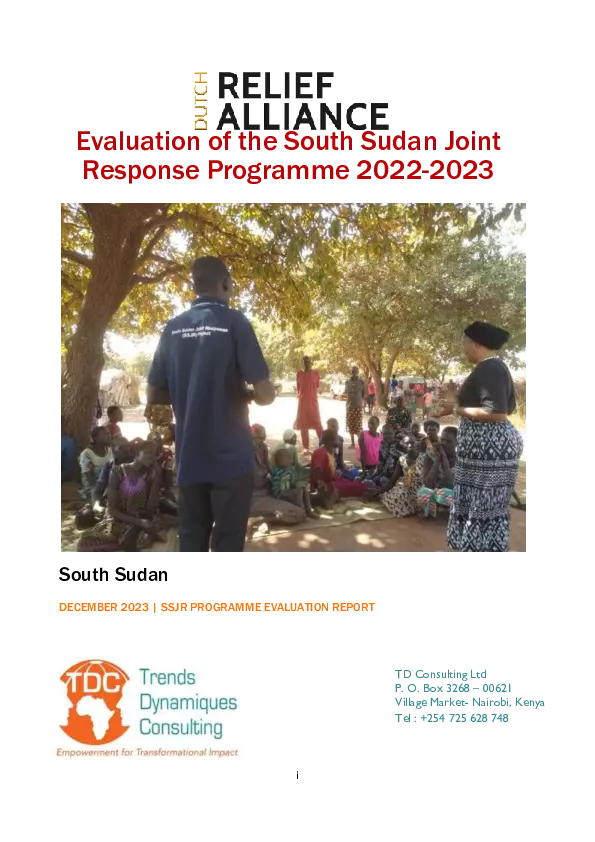
Publication year:
2023
English
Format:
PDF (1.8 MiB)
Publisher:
Save the Children International,Save the Children South Sudan
The South Sudan Joint Response is part of the Dutch Relief Alliance (DRA) which was established to respond to the challenges of the humanitarian system and the growing gap between humanitarian needs and humanitarian funding in partnership with the Dutch Ministry for International Trade and Development Cooperation to increase effectiveness of Dutch humanitarian aid. The Dutch Relief Alliance (DRA) is a coalition of 14 Dutch NGOs which respond to protracted crises as well as acute crises. The main objectives of the Dutch Relief Alliance are to deliver effective, efficient, relevant and timely humanitarian aid through collaboration.
The South Sudan Joint Response (SSJR) 2022-2023 is being implemented by 14 organizations -7 INGOs and 7 NNGOs in 7 states of Northern Bahr El Ghazal Aweil, Western Bahr El Ghazal Wau, Warrap, Jonglei, Upper Nile, Unity State Bentiu and Central Equatoria focusing on 5 sectors, namely Food Security Livelihood (FSL), Water, Sanitation and Hygiene (WASH), Nutrition, Multipurpose Cash and Protection. The South Sudan Joint Response (SSJR) 2022-2023 was designed to provide life-saving assistance to people most affected by the multiple crises.” Initially, the evaluation was planned to take place in Wau (Western Bahr El Ghazal State), Malakal (Upper Nile State) and Pibor Administrative Region, however, due to flooding Pibor was inaccessible and was replaced by Tonj North (Warrap State). The evaluation was conducted in December 2023. The SSJR evaluation sought to assess the overall performance of the SSJR against selected evaluation criteria focusing on relevance, coherence, efficiency, effectiveness, impact, sustainability and localization and the Core Humanitarian Standards, ensuring accountability towards the Dutch Government, the Dutch public and the beneficiaries of the program.
This evaluation deployed a combination of the Outcome Mapping (OM) methodology and the Most Significant Change (MSC) methodology, and a Secondary review of literature and SSJR project annual reports and documents, as well as their related techniques and implementation approaches to conduct the evaluation. The OM was important in mapping emerging outcomes from the SSJR implementation, MSC to document the impact on beneficiaries’ livelihoods, while the secondary review of literature helped to provide humanitarian context in the SSJR implementation regions, South Sudan at large, and provide over-arching background in terms of what the targeted interventions. A series of key informant interviews and focus group discussions were conducted in December 2023, where 48 KIIs (32M/16F) and 102 FGD Participants (44F/58M) were achieved.
Read full abstract
English
1 Documents
Format
Content type
Country
Region
Topics
Rights
© Author/Publisher
If you have noticed a document assigned to the wrong author or any other inaccuracies, let us know! Your feedback helps us keep our data accurate and useful for everyone.
Share
Link